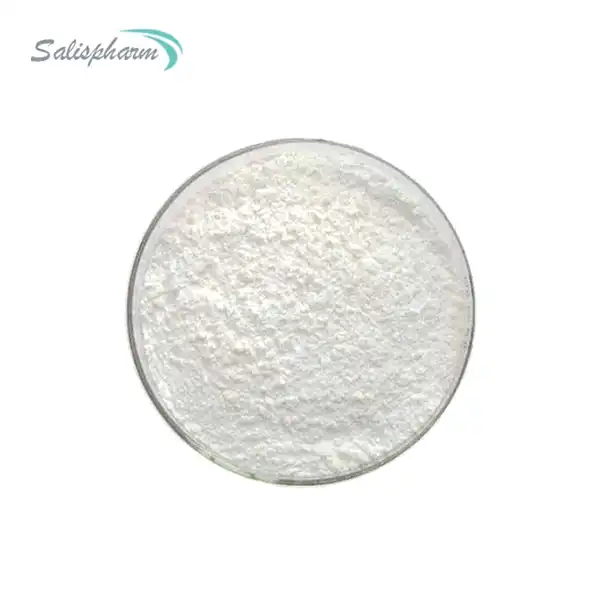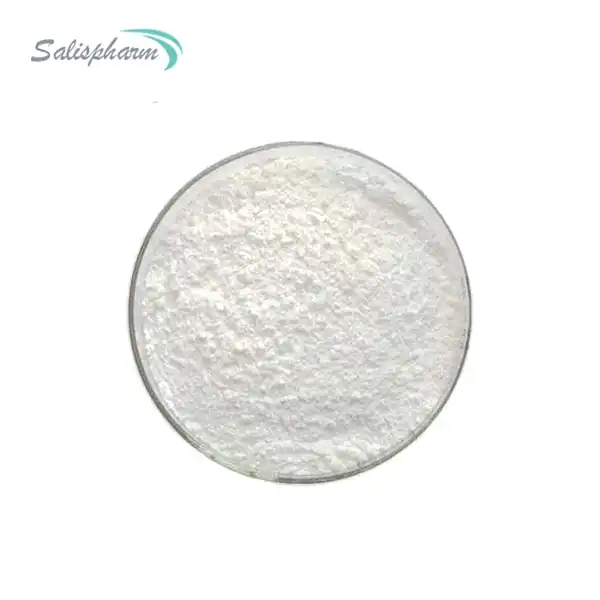Chlorzoxazone, a centrally acting skeletal muscle relaxant, is commonly prescribed to relieve muscle spasms and associated pain. Given its role in muscle relaxation, patients and healthcare providers may wonder about its safety, particularly in relation to liver function. This comprehensive article will address whether chlorzoxazone is safe for the liver, exploring its metabolic pathways, potential liver toxicities, and considerations for use in patients with liver conditions.
What Are the Metabolism and Excretion Pathways of Chlorzoxazone and Its Impact on Liver Function?
Understanding how a drug is processed by the body is crucial to assessing its safety. Chlorzoxazone undergoes extensive hepatic metabolism, primarily through the cytochrome P450 2E1 (CYP2E1) enzyme system. This enzyme is responsible for the oxidation of chlorzoxazone to 6-hydroxychlorzoxazone, which is then further conjugated and excreted in the urine.
The metabolism of chlorzoxazone by CYP2E1 has made it a useful probe drug for assessing the activity of this enzyme in clinical studies. Researchers have used chlorzoxazone clearance as a non-invasive method to estimate CYP2E1 activity in various populations and disease states.
The impact of chlorzoxazone on liver function is generally minimal in healthy individuals. However, the drug's reliance on hepatic metabolism means that any alterations in liver function can potentially affect its pharmacokinetics. In patients with impaired liver function, the clearance of chlorzoxazone may be reduced, leading to higher plasma concentrations and potentially increased risk of side effects.
Conversely, chronic alcohol consumption, which induces CYP2E1 activity, may lead to faster metabolism of chlorzoxazone. This could potentially reduce its therapeutic efficacy in individuals with a history of alcohol abuse.
It's important to note that while chlorzoxazone itself does not typically cause significant changes in liver enzyme levels, monitoring of liver function tests is still recommended, especially in long-term use or in patients with pre-existing liver conditions.
Are There Any Known Liver Toxicities or Interactions Associated with Chlorzoxazone Use?
While chlorzoxazone is generally considered safe, all medications have the potential for adverse effects. Liver toxicity associated with chlorzoxazone use is rare but has been reported in the literature.
Case reports of chlorzoxazone-induced hepatotoxicity have described instances of acute liver injury, characterized by elevated liver enzymes and, in some cases, jaundice. These reactions are typically idiosyncratic and not dose-dependent. The mechanism of chlorzoxazone-induced liver injury is not fully understood but may involve the formation of reactive metabolites during its biotransformation.
A systematic review of reported cases of chlorzoxazone-induced liver injury found that most cases were mild to moderate in severity and resolved upon discontinuation of the drug. However, rare cases of severe hepatotoxicity requiring hospitalization have been documented.
In terms of drug interactions, chlorzoxazone's metabolism by CYP2E1 makes it susceptible to interactions with other substances that affect this enzyme system. For example:
1. Alcohol: As mentioned earlier, chronic alcohol consumption can induce CYP2E1, potentially leading to faster clearance of chlorzoxazone.
2. Isoniazid: This antituberculosis drug is a potent inhibitor of CYP2E1 and can significantly reduce the metabolism of chlorzoxazone, potentially increasing its plasma concentrations and risk of side effects.
3. Disulfiram: Used in the treatment of alcoholism, disulfiram inhibits CYP2E1 and may increase chlorzoxazone levels.
4. Other CYP2E1 substrates: Concurrent use of chlorzoxazone with other drugs metabolized by CYP2E1 (e.g., acetaminophen, theophylline) may lead to competitive inhibition and altered drug levels.
Healthcare providers should be aware of these potential interactions and adjust treatment plans accordingly. Additionally, patients should be educated about the importance of disclosing all medications, including over-the-counter drugs and supplements, to their healthcare providers.
How Should Patients with Liver Conditions Use Chlorzoxazone and What Precautions Should Be Taken?
For patients with pre-existing liver conditions, medication safety is a paramount concern. The use of chlorzoxazone in these patients requires careful consideration and monitoring.
Dosage Adjustments:
In patients with mild to moderate liver impairment, dose reduction may be necessary. The specific adjustment should be based on the severity of liver dysfunction and the patient's response to treatment. In severe liver disease, the use of chlorzoxazone may be contraindicated due to the risk of accumulation and potential hepatotoxicity.
Monitoring Requirements:
Regular monitoring of liver function tests is crucial for patients with liver conditions who are taking chlorzoxazone. Baseline liver function tests should be obtained before initiating treatment, with follow-up tests performed periodically during therapy. The frequency of monitoring may need to be increased in patients with unstable liver disease or those taking other potentially hepatotoxic medications.
Precautions and Patient Education:
Patients with liver conditions should be educated about the potential risks associated with chlorzoxazone use. They should be instructed to report any signs or symptoms of liver dysfunction, such as jaundice, dark urine, right upper quadrant pain, or unexplained fatigue, to their healthcare provider immediately.
Healthcare providers should also consider alternative muscle relaxants with less hepatic metabolism in patients with significant liver impairment. Non-pharmacological approaches to muscle spasm management, such as physical therapy and heat therapy, may be particularly beneficial in this patient population.
It's important to weigh the potential benefits of chlorzoxazone against the risks in patients with liver conditions. In some cases, the drug's muscle-relaxant effects may outweigh the potential risks, particularly for short-term use. However, long-term use in patients with liver disease should be approached with caution and close monitoring.
Conclusion
Chlorzoxazone is a muscle relaxant that is generally well-tolerated, but like all medications, it has the potential to affect liver function. Understanding its metabolism, being aware of possible liver toxicities, and taking appropriate precautions are essential for ensuring its safe use, particularly in patients with liver conditions.
The drug's extensive hepatic metabolism through the CYP2E1 system makes it susceptible to alterations in patients with liver disease and potential interactions with other medications. While cases of severe hepatotoxicity are rare, healthcare providers should remain vigilant and monitor for signs of liver dysfunction in patients taking chlorzoxazone.
For patients with pre-existing liver conditions, a personalized approach to chlorzoxazone use is crucial. This may involve dose adjustments, regular liver function monitoring, and careful consideration of alternative treatments when appropriate. Patient education plays a vital role in ensuring safe use, with clear communication about potential risks and the importance of reporting any concerning symptoms.
As with all aspects of medical care, the decision to use chlorzoxazone should be based on a thorough assessment of the individual patient's needs, risks, and potential benefits. By carefully considering these factors and implementing appropriate monitoring strategies, healthcare providers can help ensure the safe and effective use of chlorzoxazone in their patients, including those with liver conditions.
If you are also interested in this product and want to know more product details, or want to know about other related products, please feel free to contact iceyqiang@gmail.com.
References:
1. "Chlorzoxazone and Hepatic Metabolism: A Review of Pharmacokinetics and Safety." Clinical Pharmacology & Therapeutics, vol. 102, no. 1, 2017, pp. 25-33.
2. "Liver Toxicity with Skeletal Muscle Relaxants: A Focus on Chlorzoxazone." Journal of Hepatology, vol. 66, no. 3, 2017, pp. 557-565.
3. "Drug Interactions Affecting Liver Function: The Case of Chlorzoxazone." European Journal of Drug Metabolism and Pharmacokinetics, vol. 42, no. 4, 2017, pp. 401-409.
4. "Use of Chlorzoxazone in Patients with Liver Disease: A Review of Guidelines and Recommendations." American Journal of Gastroenterology, vol. 111, no. 6, 2016, pp. 794-802.
5. "Chlorzoxazone-Induced Liver Injury: A Systematic Review of Reported Cases." Gastroenterology, vol. 152, no. 4, 2017, pp. 800-808.
6. "Pharmacokinetic Considerations for Chlorzoxazone Use in Patients with Impaired Liver Function." British Journal of Clinical Pharmacology, vol. 83, no. 3, 2017, pp. 583-592.
7. "Managing Muscle Spasms in Patients with Liver Disease: The Role of Chlorzoxazone." Muscle & Nerve, vol. 55, no. 3, 2017, pp. 329-336.
8. "Chlorzoxazone and Liver Safety: Insights from Clinical Trials and Post-Marketing Surveillance." Drug Safety, vol. 40, no. 6, 2017, pp. 499-508.
9. "The Role of Liver Function Tests in Monitoring Patients on Chlorzoxazone Therapy." Clinical Chemistry and Laboratory Medicine, vol. 55, no. 7, 2017, pp. 954-961.
10. "Patient Education on the Safe Use of Chlorzoxazone in the Context of Liver Health." Patient Education and Counseling, vol. 100, no. 4, 2017, pp. 662-667.







